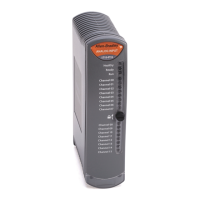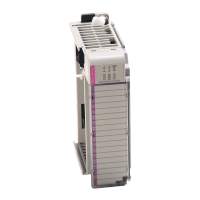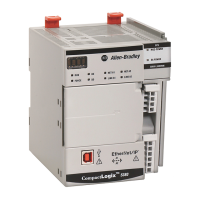Rockwell Automation Publication 1715-UM001J-EN-P - December 2020 261
Appendix B 1715-IB16D Digital Input Module Diagnostics
Calculate Threshold and
Resistor Values
To arrive at the correct diagnostic settings, you must know one of the two
values—either the threshold values or the resistor values, and then calculate
the other set of values from the known values.
The following example shows a typical EOL arrangement for an Emergency
Shutdown Device.
Figure 78 - Field Loop Circuit for Line Monitored Digital Input for Emergency Shutdown Systems
(ESD)
You must realize that by virtue of R1 and R2, in combination with the internal
impedance and field switch position of the module, various voltage levels are
produced at the input terminal that the threshold values can characterize.
Knowing the resistor values allows you to calculate the voltage levels to arrive
at the threshold settings.
Use Figure 79
and Figure 80, and the resistor values you choose. to determine
how the system responds to various field wiring conditions, so that the
threshold values can be set. For our example, we used the resistor values in
Table 59 on page 259
.
Calculate the Voltage for Off/On Conditions for Threshold Values
The following examples calculate the voltage for an ‘off’ condition with the
switch opened and closed.
Open Switch/Off Condition
With SW1 open, current flows through R1 and R2 (15 + 3.9 k18.9 k. We can
calculate the voltage that is present at the input of the input module and by
using a voltage divider circuit, we can calculate the voltage for an ‘off’
condition.
Shield
(if used)
Terminal
Blocks
OV
20Ω
100Ω
50 mA
4.99kΩ
Termination
Assembly
+24V DC
R1
R2

